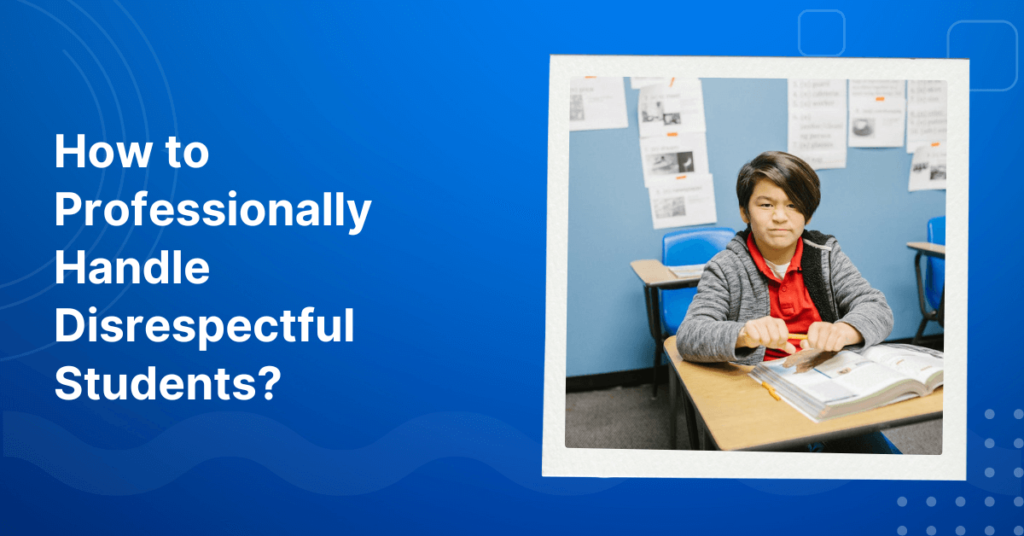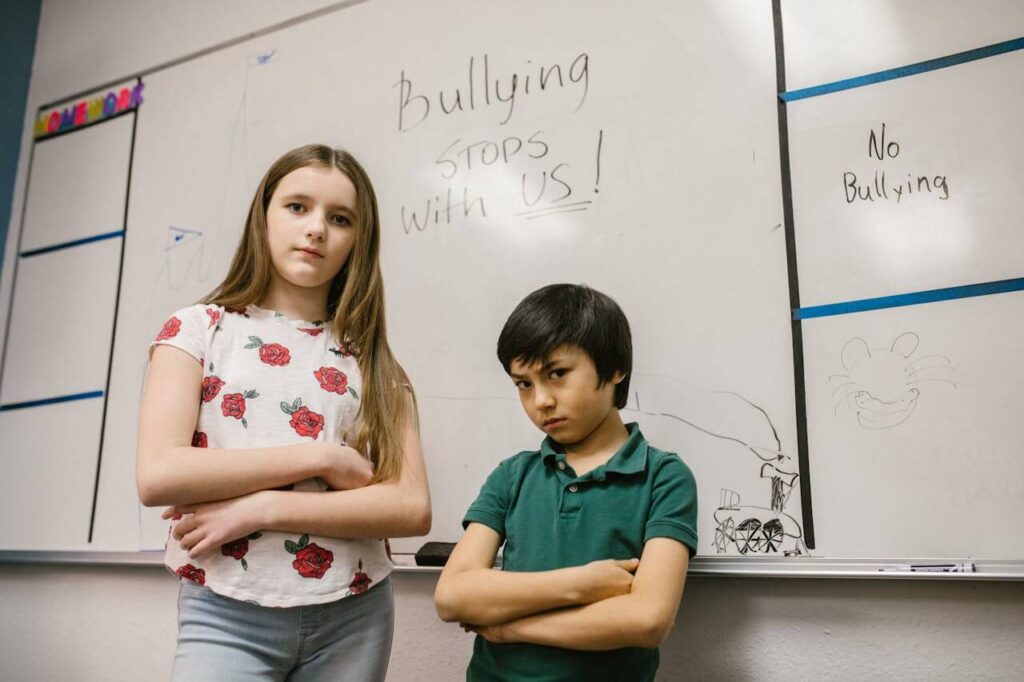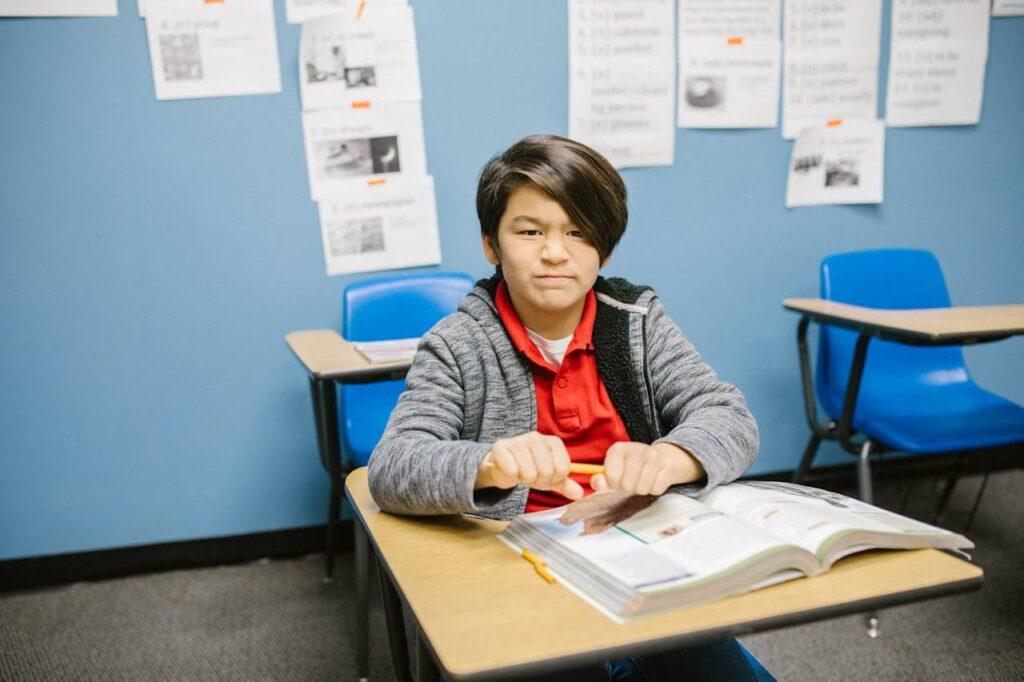
How to Professionally Handle Disrespectful Students?
How to professionally handle disrespectful students? Dealing with students who show disrespect requires patience, clear communication, and positive reinforcement to guide them towards better behavior in the classroom. Understanding their perspective and setting firm but fair boundaries are key to fostering a respectful learning environment. To understand more, please follow VTJ for detailed information in the article below!

Handle disrespectful students professionally by staying calm, ensuring safety, listening carefully, showing understanding, giving choices, and offering help with calming techniques
What disrespectful students need from you
Disrespectful students need understanding and support from you. They need you to acknowledge their feelings and help them manage their emotions constructively. It’s important to set clear boundaries, maintain calmness, and guide them towards respectful behavior through positive reinforcement and constructive feedback. Building trust and empathy can help create a supportive learning environment where students feel valued and motivated to improve their conduct.
How to professionally handle disrespectful students?
Stay calm: When students act out, stay calm. Take a moment to collect your thoughts, speak gently, and use calm body language. This helps keep things peaceful and shows how to handle tough situations calmly.
- Ensure safety: Make sure everyone feels safe. If a student does something unsafe, like throwing things, calmly guide them to a safe spot in the room. This helps calm them down and keeps everyone safe.
- Listen carefully: Listen to students carefully. Show you care about how they feel and what they’re going through. This helps them feel heard and respected. Use eye contact and repeat what they say to show you understand.
- Show understanding: Approach students with kindness. Speak gently and show you understand how they feel. This helps ease tensions and encourages them to talk about what’s bothering them.
- Give choices: Let students choose how to handle their feelings. Ask if they want a break, to talk privately, or do a calming activity like deep breathing. This gives them control and helps them calm down.
- Offer help: After things calm down, offer tips or tools to manage feelings. Teach techniques like deep breathing to stay calm. Check in later to see how they’re doing and offer more help if needed.
See More Strategies: How to Control a Classroom Without Yelling
What are appropriate consequences for kids who show disrespect?

Appropriate consequences for kids who show disrespect can vary depending on the situation and age of the child, but generally, they should aim to correct behavior while teaching respect. Here are some examples:
- Verbal warning: A clear verbal reminder of expected behavior, emphasizing respect towards others.
- Loss of privileges: Temporarily removing privileges such as recess time, using certain classroom resources, or participating in preferred activities.
- Time-Out: Providing a brief period away from the group to reflect on behavior and regain composure.
- Apology: Encouraging the child to apologize sincerely to the person they disrespected, fostering empathy and accountability.
- Restitution: Assigning a task that helps repair any harm caused by their disrespectful behavior, such as helping to clean up or assisting another student.
- Parental involvement: Communicating with parents or guardians to discuss the incident and develop a plan for improvement.
- Reflection sheet: Asking the student to write or discuss what happened, why it was disrespectful, and how they can make better choices in the future.
- Behavior plan: Implementing a structured plan with clear expectations and rewards for respectful behavior, helping the student understand consequences.
- Counseling or mediation: Involving a school counselor or mediator to facilitate a discussion and resolution between the student and affected parties.
- Progress monitoring: Regularly reviewing and discussing the student’s behavior to track improvements and reinforce positive changes.
These consequences should be applied consistently and with fairness, aiming to teach the importance of respect while supporting the student’s social and emotional development.
In conclusion, knowing how to professionally handle disrespectful students involves patience, empathy, and consistent guidance. By setting clear expectations and building positive relationships, teachers can help students learn and grow, fostering a respectful classroom environment for everyone involved. Don’t forget to check out other VTJ posts to gain more useful knowledge!
Discover Related Guides: 6 Tips for Managing Student Behavior in the Classroom
FAQs
How to handle arrogant students?
Arrogant students can be frustrating, but there are ways to address the behavior and create a more positive learning environment. Here are some strategies:
- Stay calm and collected: Getting flustered gives them power. Maintain a calm demeanor and professional tone.
- Focus on the behavior: Address the specific behavior, not their personality. If they’re confident in their knowledge, channel it into a positive. Can they help tutor a struggling classmate? Present their findings to the class?
- Use private conversations: Address the behavior privately after class or with a quick note. This allows for a more focused discussion without an audience.
- Positive reinforcement: Acknowledge and praise when they participate positively. “That was a great point you brought up, John.”
- Seek support (if needed): If a student’s behavior is disruptive or persistent, seek support from a school counselor or administrator to develop a plan.
Remember, the goal is to create a learning environment where everyone feels comfortable participating. By staying calm, professional, and using these strategies, you can help your arrogant student channel their confidence in a more productive way.
Explore More Teaching Tips: 14 Types of teaching methods for an effective lesson
What are the 5 R’s of classroom management?

The 5 R’s of classroom management are a framework for creating a positive learning environment that promotes good behavior. They stand for:
- Relationships: This is the foundation of everything. Strong, positive relationships between teachers and students foster trust, respect, and a willingness to learn.
- Rights: Students (and teachers) have rights within the classroom. These might include the right to feel safe, to be treated with respect, to learn, and to have a voice.
- Responsibilities: Just like rights, students (and teachers) also have responsibilities. These could include completing assignments, participating in class discussions, treating others with respect, and following classroom rules.
- Routines: Clear routines provide structure and predictability for the classroom day. This includes routines for entering and leaving the classroom, transitions between activities, and procedures for handling materials.
- Responsibilities: When students understand their responsibilities, they take ownership of their learning and behavior. This could involve taking notes, completing assignments on time, and being prepared for class.
By focusing on these five areas, teachers can create a classroom environment where students feel supported and empowered to succeed.
Continue Learning: What are the 5 R’s of Classroom Management?
Knowing how to manage student behavior, you won’t worry about dealing with disrespectful students anymore. One of the most effective ways to manage is to establish classroom rules and guidelines from the beginning. There are also many other ways. So, be proactive in learning and improving various skills to handle situations professionally!






